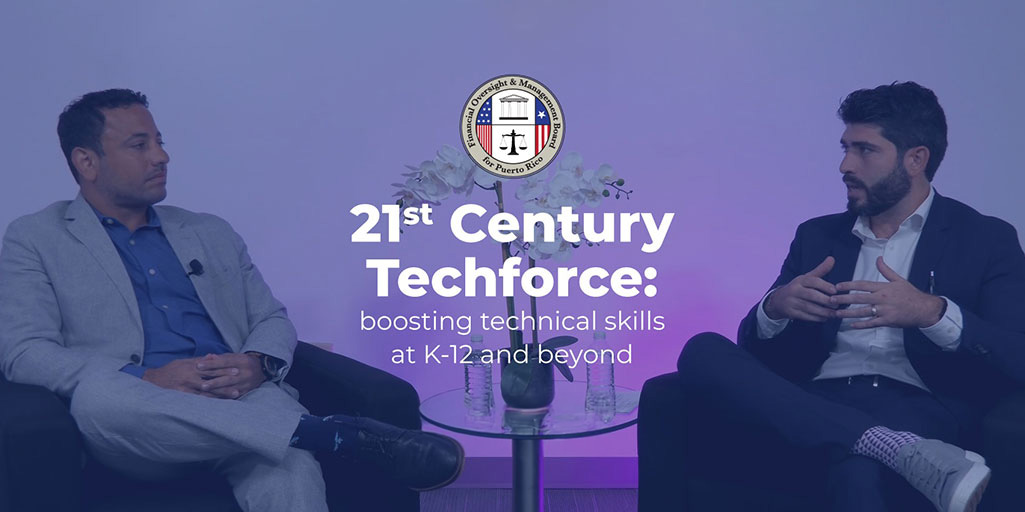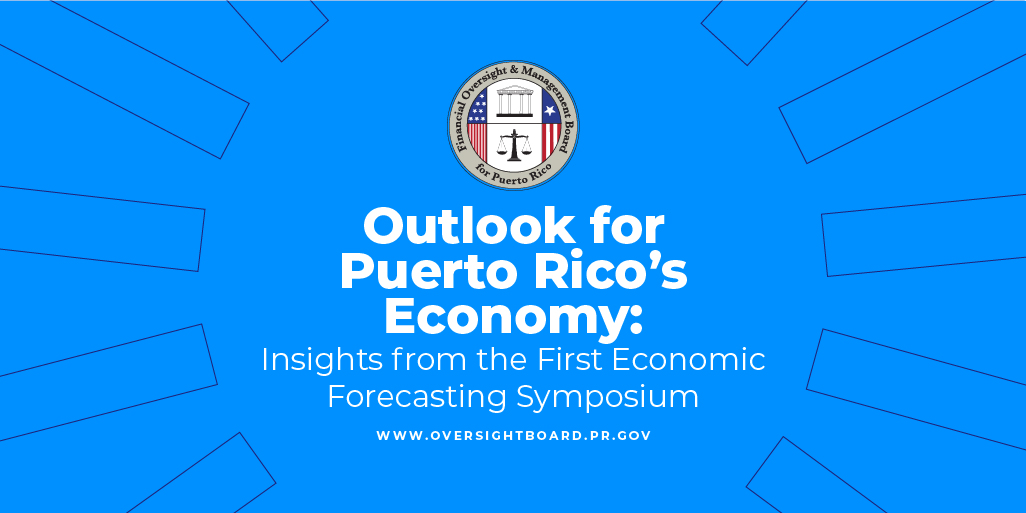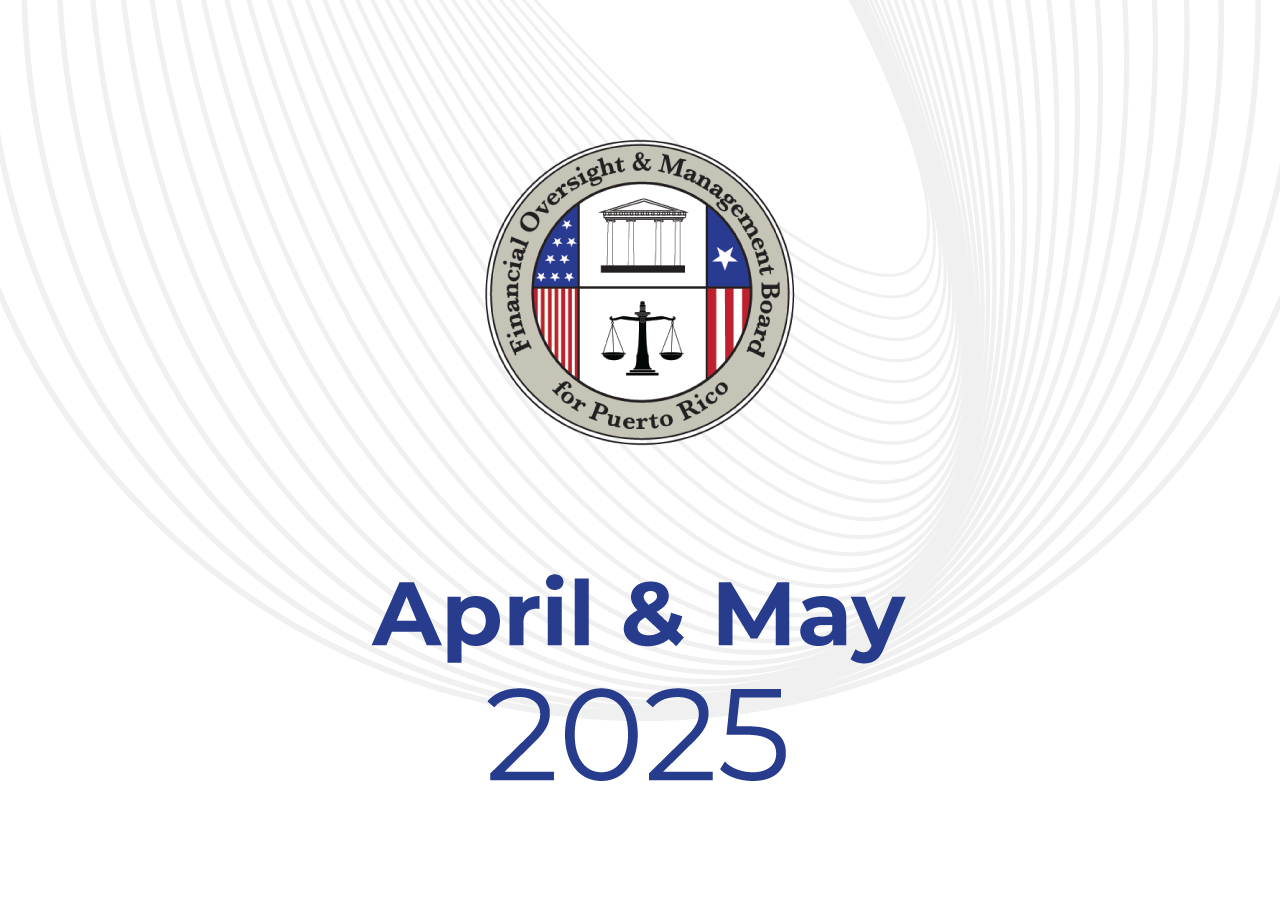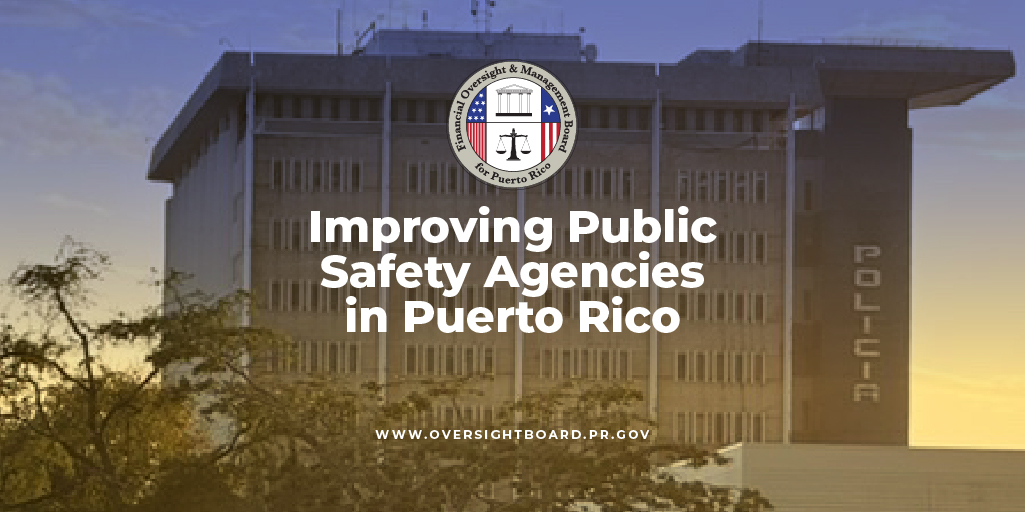Arnaldo Cruz, Director of Policy and Research at the Financial Oversight and Management Board for Puerto Rico, spoke with Humberto Mercader, Assistant Deputy Secretary for Strategic Initiatives at the Puerto Rico Department of Economic Development and Commerce, about the 21st Century Techforce program, which seeks to boost digital skills among students in Puerto Rico and the competitiveness of Puerto Ricans in the computer industry.
The $50 million fund through which the 21st Century Techforce program was developed was included in Puerto Rico’s 2020 fiscal plan, following a public policy investigation conducted by the Oversight Board. The research found that there is a gap between the needs of the local industry and the academic offerings of universities and educational providers on the island.
Now the funds are being distributed through DDEC and PRopósito, the strategic framework for the economic development of Puerto Rico.
To listen to the entire conversation in Spanish between Cruz and Mercader click on the video below. The written version has been translated, condensed, and edited.
How did DDEC find this fund?
We identified very early on that jurisdictions that are succeeding in the world today focus on remaining competitive through the development of talent and investing in talent development. And not just any talent: the modern economy is investing in digital talent and computer skills. There are many industries that are asking for these skills and there are many industries that are investing in them. That’s when we, at DDEC, saw the fiscal plan and decided that the fund was the perfect opportunity to develop a meaningful project as part of a complete strategy for Puerto Rico, and that is where 21st Century Techforce emerges.
Before designing the programs, you decided to start with an analysis that would drive the design. Tell us a little bit about that research and how that directed the strategy for the program.
There were several components. One was to look at global trends and what was happening in the countries that are succeeding in today’s economy. The second was to understand the local ecosystem and identify its greatest needs and the gaps that existed. That took us two to three months, but the analysis was comprehensive. We tried to interview employers, all the universities and we tried to identify alternative providers of education. Also, we looked at which funds were available, federal funds and other programs that could be used as part of this plan. The main findings that shocked us, and that were the basis for the design of the programs include:
The first is that the graduation rate at Puerto Rican universities is less than 50%. That means that in P.R. more than half of the people who enter college do not graduate. And what is happening with these people? They leave university without any type of skill that the market values, without any type of credential that a company identifies as something that it needs.
We also looked at what was happening globally, the growth that was projected in various professions. We saw that the projection was growth of 5% to 10%. But, in computer science and engineering, the expected growth was over 25%. That means that there were some professions that were going to grow at a much faster rate than others.
Secondly, for each graduate with these skills there were five available job openings. In other words, globally, not enough people with the necessary skills are graduating to meet industry demand. The need for this talent is global. It is not just a P.R. problem. We interviewed more than 25 employers in P.R. to try to quantify those numbers. We determined that the need was almost 2 to 1. But if you tie that to the fact that the priority of organizations like Invest Puerto Rico is, precisely, growth in this type of industry, you can be sure that the need will grow even more.
So that’s where the focus on tech careers comes in. We have prioritized 22 roles that include cybersecurity, data analytics, web development, mobile apps, etc. and based on that, we created the programs.
By understanding those gaps, we were able to define a series of initiatives that we should implement to achieve a goal of graduating 50,000 professionals with these skills in P.R. over the next ten years. We defined this goal, while also understanding that there is still a huge migration problem: more than 47% of the people who graduate with these skills leave Puerto Rico.
Tell us about the 3 main programs within 21st Century Techforce.
The first one is Stackable Credentials, which is directly tied to the graduation rate because if people are leaving college in their second or third year, when they try to enter the workforce and they don’t have the necessary skills or credentials. They are not getting a good job. It’s also a problem for universities because they are losing students. So, this program specifically targets universities that have bachelor’s programs in computer sciences and the entire umbrella of roles that we prioritize. The goal is for them to create, within those bachelors’ programs, shorter programs that allow the student to accumulate, or stack, credentials so that in 15 months or 18 months the student can obtain a certificate. Then you can have an associate degree and you can continue toward obtaining a bachelor’s degree.
¿Which universities are participating in this?
13 universities participated in the selection process, and we chose 6. They are: UPR’s Mayagüez campus, Sacred Heart University, Polytechnic University, UPR’s Bayamon campus, Interamerican University y Ana G. Mendez, and we were truly surprised by the creative and ambitious proposals they presented, which is exactly what we had hoped for.
Tell us about the second program.
The second program is Short Form Credentials. The difference is that other educational institutions – not just universities – can participate in this program. This was one of the opportunities we found: in P.R. there aren’t many providers that offer short form credentials. Most people in P.R. have heard of Holberton or Terminal34, but other than those, there aren’t any other providers like this.
I really like this program because I think it will have a significant impact on the educational ecosystem because we are adding an option that does not currently exist, and we are brining providers from outside of P.R to the island. They are coming to disrupt, to change the game and create competition where it didn’t previously exist. Thirty-three institutions participated in the selection process, and we chose 9 to implement the program.
Tell us about the K though 12 program.
We call the program the K-12 Technology Light Houses. What we want to create are schools that will set the bar when it comes to providing students with opportunities to enter careers in technology. To achieve this, these 3 things need to happen:
1) teacher training
2) curriculum creation: the Department of Education does not have a technology curriculum. It has some courses here and there, but it is not organized into a curriculum that continues through the 12th grade.
3) infrastructure conditioning: some schools have the necessary infrastructure, but they are the minority.
There is a fourth component and that is to include employers. This is a bit tricky because our intention is not for students to graduate from 12th grade and go straight into the workforce, but we would like for them to learn about the opportunities that exist for them. We started with a pilot program at 9 schools.
You know we, at the Oversight Board, love pilot programs. The Civil Service Reform began with a pilot. It’s a great way to learn as you go, so it’s great that this is your approach.
We began about 3 or 4 months ago. We held a Teacherthon where we gathered all of the teachers from the 21 schools we initially identified as possible participants and they prepared proposals. We feel very optimistic that the pilot programs will go well. We expect that next year we will be able to conduct pilots at 50 schools, but beyond that, our goal is to implement public policy within the Department of Education so that more attention is focused on technology and computer sciences.





